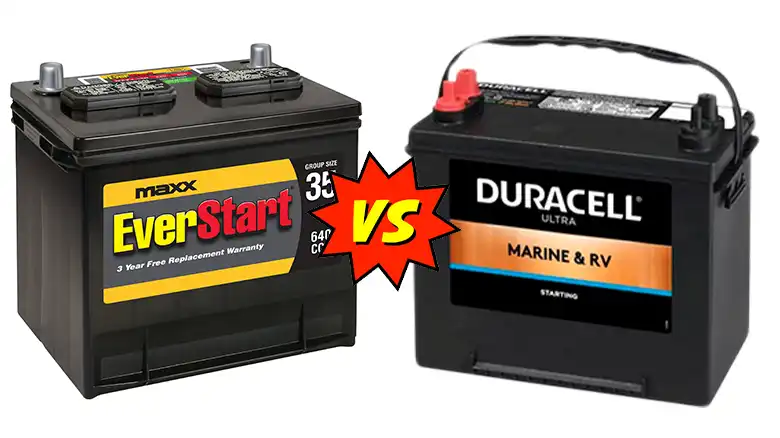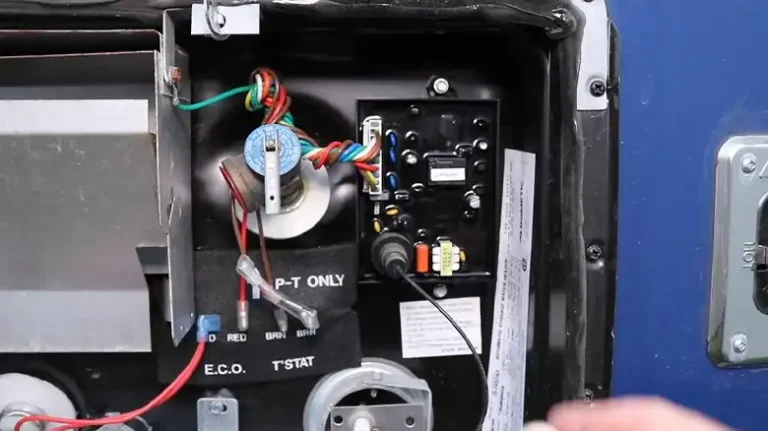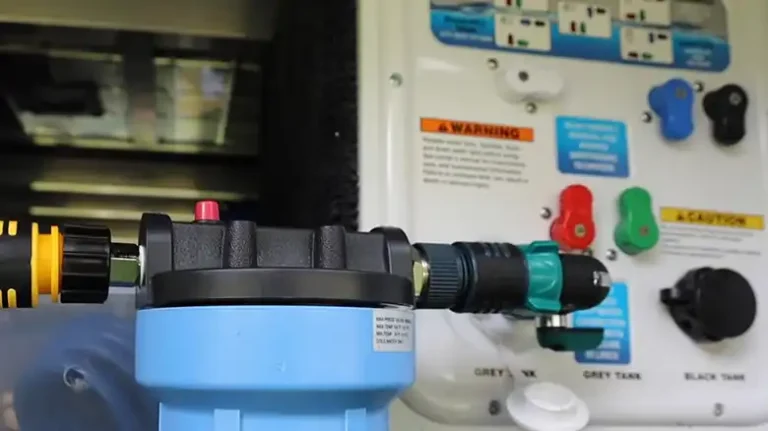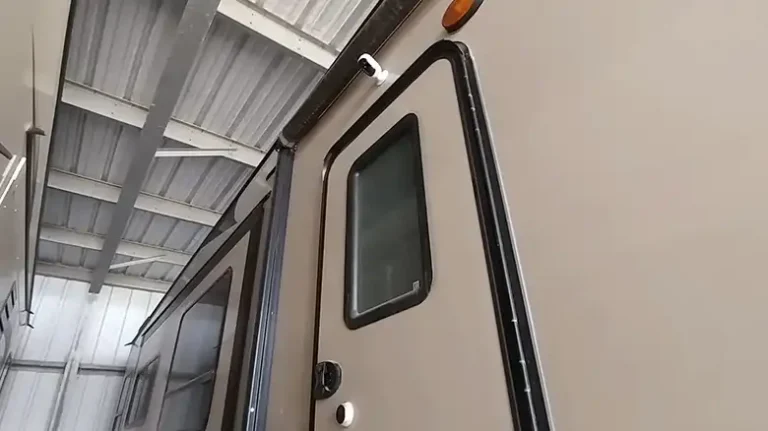Choosing The Right RV Battery Type | Deep Cycle vs Starting
Heading out on your RV adventure is an exciting chapter, there’s an important decision to make: choosing the right RV battery. It might not sound glamorous, but trust me, it plays an important role in the adventure. The type of battery you pick can make the difference between a smooth journey and unexpected hiccups on the road.
Now, let’s talk about the two main types of RV batteries: deep cycle and starting batteries. Deep cycle batteries are endurance athletes, designed for long-lasting power to keep your RV’s lights, appliances, and gadgets running smoothly. On the other hand, starting batteries are the sprinters, providing a burst of power to kickstart your engine. So, which one suits your RV adventure better? It’s not a one-size-fits-all answer; each has its pros and cons. Understanding these differences will ensure your RV is powered up for the long haul.
In this guide, I am going to break down the essentials, making it easy for you to choose the battery that aligns with your travel style. Stay with me to the end of this article to uncover the perks and drawbacks of each type, ensuring your journey is powered up and hassle-free.

What are Deep Cycle Batteries?
Deep cycle batteries are lead-acid batteries designed to provide steady power over long periods of time, rather than a quick burst. Their purpose is to have a large power storage capacity and the ability to withstand repeated discharges to low states of charge.
Unlike starting batteries used to start engines, deep-cycle batteries have thicker lead plates inside to prevent deterioration. This allows them to handle repeated deep discharges, where they may be drained up to 80% before being recharged again. However, this also means less instantaneous power flow for short bursts.
In RVs, deep cycle batteries are often used as house batteries to power lighting, appliances, entertainment systems, and other electronics when dry camping or boondocking, independent of shore power. An RV may have one or more dedicated deep-cycle batteries to run accessories and equipment without starting the engine. This saves on fuel costs and noise from running the RV’s generator to power things.
Key qualities for good deep cycle batteries include high amp-hour ratings to store more power, low internal resistance, spill-proof and mountable case designs, and steady power output. Proper charging and maintenance are crucial to prevent sulfation and prolong deep-cycle battery life. Overall, deep cycle batteries allow RVs flexibility and self-sufficiency off-grid by meeting continuous power needs.
Types of Deep Cycle Batteries
Deep cycle batteries are essential for powering RVs and allowing extended use off-grid. There are a few main types of deep-cycle batteries used in RV applications:
Lead-acid and Lithium-ion (Li-ion) Batteries: Lead-acid batteries are the most common deep-cycle battery. They use plates of lead and lead oxide immersed in sulfuric acid to store and release energy. Lead-acid batteries are cost-effective but heavy. Proper charging and preventing sulfation help extend their lifespan.
Lithium-ion batteries are becoming more popular for RVs. They are lightweight, hold a charge well, and provide steady power output. However, they are more expensive than lead-acid. Use a lithium-ion compatible charger and prevent fully draining them to preserve longevity.
Nickel-Cadmium (Ni-Cd) and Nickel-Metal Hydride (Ni-MH) Batteries: Nickel-based batteries like nickel-cadmium (Ni-Cd) and nickel-metal hydride (Ni-MH) are also used although less common. They have benefits like durability and low maintenance requirements. However, they contain toxic metals and have lower energy density.
Battery Maintenance
Properly maintaining batteries is crucial for maximizing their lifespans. For both starting and deep cycle lead-acid batteries, periodically check electrolyte levels and add distilled water as needed. Clean corrosion from terminals. Store batteries secured and prevent total discharge. Test for weak cells over time that may need replacement. Following the manufacturer’s charging guidelines can help prevent damage from under or overcharging. With proper care, RV batteries can better provide reliable power over years of service.
Benefits and Drawbacks of Deep Cycle Battery
Deep cycle batteries provide essential power for RV house systems, though, like most battery technologies, they come with both advantages and disadvantages worth considering.
On the benefits side, key strengths of deep cycle batteries include:
Longer Lifespan: Deep cycle batteries withstand repeated discharge/recharge cycles. Flooded lead-acid types often last 4-6 years under proper care and maintenance.
High Efficiency: Less energy is lost as heat during charge/discharge cycles compared to starting batteries, allowing more power usage between recharges.
Large Capacity: Deep cycle batteries store substantially more power with 100-400 amp-hour ratings being common for RV house bank needs.
Flexible Usability: One or more can power lighting, appliances, entertainment systems, and other electronics to suit different off-grid camping needs.
The downsides of relying on deep cycle batteries cover factors like:
High Upfront Cost: Large battery banks required for extended RV boondocking can initially be expensive to purchase and install.
Increased Weight: Flooded lead-acid models are heavy, which cuts into overall cargo capacity. Lithium alternatives minimize weight.
Slow Recharging: Replenishing large depleted capacity with shore power or a generator is slower compared to partially recharging a starter battery.
Sulfation Concerns: Letting lead-acid batteries sit at very low states of charge for extended times can damage plates via sulfation buildup.
With smart setup and proper care, deep cycle batteries enable RVs’ flexible dry camping abilities. But factoring in their potential drawbacks allows the best matching house power solutions to individual needs.
What are Starting Batteries?
Starting batteries are lead-acid batteries that are designed to deliver a high burst of energy for a short period to crank over an engine to get it started. Their purpose is to provide the power needed for the starting, lighting, and ignition (SLI) system of a vehicle or RV engine.
Unlike deep cycle batteries that are made for gradual power output, starting batteries are engineered to provide a sudden, powerful jolt to turn the starter and get the engine running. They have a greater number of thin plates inside them to maximize surface area and current flow. However, this also means they cannot withstand repeated deep discharging without damage.
In RVs, starting batteries are used to provide the initial power to start the vehicle’s engine. Many RVs have separate starting and house batteries – the starting battery is dedicated solely to engine starting, while deep cycle house batteries power interior lights and appliances when dry camping or boondocking. This prevents inadvertently draining the starting battery and being unable to start the RV later. Proper battery isolation and management are important in RVs to ensure a starting battery retains adequate charge.
Some key characteristics of a good starting battery are high cranking amps to provide power in short bursts, good cold cranking amps to start in cold weather, and minimal internal resistance to enable maximum current flow when needed. Overall, starting batteries serve a crucial role in engine starting for RVs and other vehicles.
Types of Starting Batteries
Deep cycle batteries are essential for powering an RV’s lighting, appliances, and systems when not connected to shore power. There are a few main types of lead-acid deep-cycle batteries used:
Flooded lead-acid: Flooded lead-acid batteries contain liquid sulfuric acid electrolytes that can spill out if tipped over. They require checking electrolyte levels and adding distilled water periodically. Taking precautions when handling corrosive battery acid is important.
Absorbed Glass Mat (AGM): Absorbed Glass Mat (AGM) batteries contain electrolytes soaked in a fiberglass mat. This makes them spill-proof and mountable in any orientation. However, they can be more expensive than flooded batteries.
Enhanced Flooded Batteries (EFB): Enhanced Flooded Batteries (EFB) are advanced flooded batteries with characteristics similar to both starting and deep cycle types. They handle repeated discharges well but require electrolyte maintenance too.
Battery Maintenance
Properly caring for batteries extends their service life. For both flooded and AGM lead-acid types, regularly inspect terminals and clean corrosion, store batteries secured when not in use, recharge fully after a discharge cycle, and prevent repeated total discharges that can damage plates. Testing for weak cells and replacing them promptly also helps maintain the integrity and lifespan of the overall battery bank. With proper maintenance, deep cycle, and starting batteries can better withstand years of repeated cycling in RV applications.
Benefits and Drawbacks of Starting Battery
Having a dedicated starting battery in an RV provides reliable engine starting power, but like any system, there are both advantages and disadvantages to consider.
Benefits of Starting Battery
When evaluating a starting battery setup for an RV, some key benefits include:
Portable Power Source: Starting batteries allow self-contained engine starting ability without relying on shore power or a generator. This allows flexibility in more remote camping locations.
Fast Cranking Ability: They are designed to deliver a powerful burst of energy to rapidly spin the starter and get the engine igniting in seconds. This enables getting underway quickly.
Minimal Maintenance: Unlike deep cycle batteries, starting batteries tend to require less regular maintenance over their lifespan. Smaller water refills may be needed for some types.
Compact Size: Starting batteries are typically more compact than house batteries to conveniently fit dedicated spaces to isolate and secure them while traveling.
Potential Downsides to Weigh Include
Finite Life Span: Starting batteries generally last between 3-5 years with regular use before needing replacement. Extreme heat, cold, or improper care can decrease lifespan.
Upfront Costs: Quality starting batteries designed for RV applications can be over $100+ for standard sizes. Larger capacity or premium types run even higher.
No Deep Cycling: Repeated deep discharges trying to utilize them similar to a house battery will quickly damage starting battery plates, reducing cranking ability.
Overall, when properly matched to the vehicle and cared for, a dedicated starting battery can be a smart investment to facilitate reliable engine starting in an RV year after year.
Deep Cycle vs Starting Batteries: What Are The Differences?
Here is a comparison table outlining key differences between deep cycle and starting batteries:
| Battery Type | Deep Cycle Batteries | Starting Batteries |
| Purpose | Power RV house loads like lights & appliances | Thicker & more lead plates for depth discharge ability |
| Construction | Only 30% of DoD recommended to preserve longevity | Thinner plates to maximize burst current flow |
| Depth of Discharge | 80% Depth of Discharge (DoD) OK without damage | Very high for engine starting; 600+ cold-cranking amps |
| Cycle Life | Withstands repeated recharge cycles, 4-6 years typically | Fewer lifetime cycles as plates deteriorate faster, 3-5 years lifespan |
| Reserve Capacity | Large; 100-400 amp-hour capacities common | Small; 50-100 amp-hour ratings |
| Cranking Amps | Moderate for gradual loads; 400-1000 CA typical | Very high for engine starting; 600+ cold cranking amps |
| Recharge | Slower, can take many hours to replenish large depleted capacity | Quicker due to smaller capacity |
| Cost | More expensive due to greater plate material and larger cases/capacities | Lower cost relative to capacity and materials |
| Ideal Use | Basecamp dry camping away from shore power | Engine ignition in vehicles including RVs |
Deep cycle batteries are designed for deep, repeated discharge cycles to power RV house systems, while starting batteries facilitate short powerful bursts solely to ignite the engine when needed. Factoring in their key differences allows for properly meeting both base camping power needs as well as reliable starting ability.
How to Choose the Right Battery Type for Your RV
Choosing the right battery setup is key to powering an RV to match individual usage needs. Here are some tips for selecting suitable battery types and capacity:
The first step is understanding your RVing style and electrical demands. For mainly short weekend trips to powered campsites, lower-capacity batteries with occasional recharges may suffice. But boondocking off-grid for extended durations requires planning for substantial battery banks with deeper cycling capacity.
Next, take stock of what appliances and electronics you utilize in the RV, and how long per day. High energy draws like air conditioning, induction cooktops, and residential refrigerators will tap battery reserves much faster. Simple lighting and fans allow for smaller storage capacity.
Also, factor in long-term costs over the 5-10 year lifespan of quality batteries. More amp-hours upfront prevents having to frequently recharge or risk damaging batteries by overly depleting their capacity. Think through peak usage times to determine adequate runtime targets between recharges.
Finally, consider battery chemistry and maintenance needs. Flooded lead-acid models require occasional checking of water levels, but provide cost-effective capacity. AGM or lithium batteries minimize maintenance but have higher sticker prices. Prioritize safety and match charging systems appropriately.
Determining the RV’s electrical footprint and camping power requirements takes some forethought, but ensures you select the best deep cycle and starting battery combination for your needs and budget.
Your Questions Answered
Q1. Are deep-cycle batteries good for cranking?
A1. No, deep-cycle batteries are not the best suited for providing the high burst of power needed for cranking over an engine. While they can provide some cranking ability, their thinner plates are not optimized to produce the hundreds of amps required to turn over most RV engines.
Q2. What is the average life of an RV deep cycle battery?
A2. The average lifespan of a flooded lead-acid deep cycle battery in an RV application is typically 4-6 years when properly maintained and prevented from extremely deep discharge cycles. High-quality AGM or lithium deep cycle models can last 8-10 years.
Q3. What is the difference between 12v regular and 12v deep cycle batteries?
A3. While both often use lead-acid chemistry and a 12v nominal rating, deep cycle batteries contain thicker internal plates allowing repeated deep discharges, unlike regular batteries designed for minimal cycling.
Q4. Why do deep-cycle batteries fail?
A4. Frequent causes of premature deep cycle battery failure include allowing complete discharges, sulfation from chronic undercharging, corroded terminals, dried-out electrolytes, and freezing damage – all of which can be prevented with proper maintenance.
Final Verdict
Choosing the optimal battery setup is crucial for powering an RV’s usage needs. Deep cycle batteries withstand repeated discharges to energize appliances while starting batteries provide momentary robust bursts solely for ignition. Evaluating electrical demands and camping duration guides ideal battery bank sizing. Proper maintenance greatly extends lifespan. Understanding unique battery characteristics and tailoring their system purpose allows RVers to reliably utilize house and engine systems on the road.



![[Explained] How Much Gas Does an RV Generator Use?](https://www.exploringthelocallife.com/wp-content/uploads/2023/09/How-Much-Gas-Does-an-RV-Generator-Use-768x431.webp)



